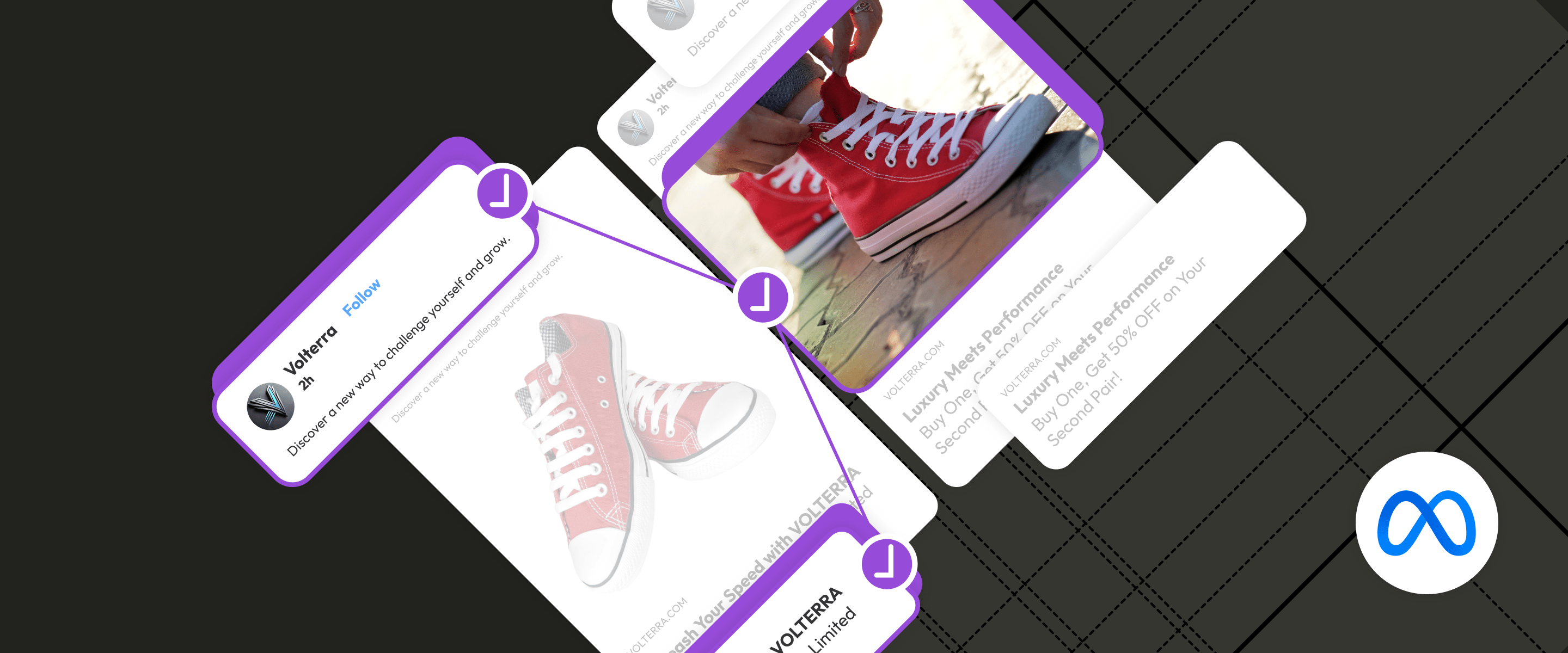
Meta Ads are changing fast, and eCommerce brands that don’t adapt risk wasted spend and lower conversions. With Advantage+ Shopping Campaigns (ASC+), Meta is pushing more automation, but is it actually working in your favor?
“Turning everything on automatically is a one-size-fits-all solution when clients are not one-size-fits-all,“ said Rachel Huffcutt, Manager of Paid Media at Agital.
If you’re struggling with rising ad costs, declining performance, or lack of control, you need a better testing strategy to optimize your campaigns and drive higher ROI.
In our recent webinar, “Don’t Let Poor Testing Tank Your eCommerce Meta Ads Performance” Kaitlyn Kerr and Rachel Huffcutt shared advanced Meta Ads testing strategies to help eCommerce brands scale efficiently. Here’s what you need to know.
Meta’s AI-driven automation makes campaign setup faster—but it also reduces advertiser control. Placements, targeting, and even creative optimizations are now harder to adjust.
“The whole new interface of campaign builds with ASC+… all advertisers are being forced into doing automatic campaign builds,” said Kaitlyn Kerr, Senior Paid Media Manager at Agital.
This automation often leads to Meta favoring broad targeting, spending too much on remarketing, and reducing overall efficiency.
Three Big Challenges Ecommerce Brands Face on Meta
Thin Profit Margins: Are you focusing ad spend on high-margin products or just chasing conversions? Without proper segmentation, brands often see revenue growth without profit growth.
High Competition & Rising Ad Costs: More brands are advertising, making it harder to get visibility. Without precise targeting and testing, you could be overspending for clicks that don’t convert.
Creative & Product Strategy Gaps: Meta prioritizes fresh, engaging creative—but many brands struggle to produce enough.Testing product positioning is just as important as ad targeting.
“The creative piece is so huge, and it’s just not getting any smaller as the years go by,” said Rachel Huffcutt. “Clients come to us needing to know what to do, what the next steps are, and how to stay on trend.”

Most brands don’t test enough. A/B testing is a start, but deeper optimization requires:
One of the biggest mistakes brands make is allowing Meta to mix cold and remarketing audiences.
“When you combine your cold and remarketing audiences, 9 out of 10 times, Meta is going to take the low-hanging fruit and just spend towards remarketing,” explained Rachel Huffcutt.
Fix this by:
This forces Meta to spend budget acquiring new customers rather than over-targeting repeat visitors.
Even the best Meta Ads won’t convert if your landing page doesn’t deliver.
66% of consumers say mobile shopping is their primary buying method, yet nearly half of Meta Ads drive traffic to pages that aren’t mobile-friendly.
“If your ad and your landing page don’t match, users bounce. I can’t tell you how many times I’ve audited accounts where the ad looks completely different from the page it drives to,” said Kaitlyn Kerr. o conversions—whether on your own site or marketplace channels.
One eCommerce brand tested sending traffic to a Best Sellers page vs. their homepage.
Result: The Best Sellers page drove a 25% higher average order value (AOV) than the homepage.
“If you have a really large product catalog, you need to direct new customers to a more curated experience,” said Meghan Houston, VP of Digital Marketing Strategy at Agital. “Otherwise, they get analysis paralysis.”

Meta’s automated product feeds often prioritize the wrong products in Dynamic Product Ads (DPA). Custom labels let you take control by segmenting products based on:
✔ Profit margins (focus on high-margin items)
✔ Bestsellers vs. new arrivals
✔ Seasonality (holiday collections, summer vs. winter)
✔ Products over the free shipping threshold
“With custom labels, we can segment products by profit margin, seasonality, or bestsellers, rather than letting Meta decide for us,” said Rachel Huffcutt.
Example: Profit Margin-Based Targeting
One ecommerce brand segmented products by profit margin and focused ad spend on high-profit items.
Result: Revenue increased by $30,000 with a 551% ROAS and lower CPA.
“We created a product set we called ‘Catnip’—high-margin, low-risk products for first-time buyers,” explained Kaitlyn Kerr.
With rising ad costs and privacy restrictions, brands must own their customer data. One way to do this? Email lead generation campaigns on Meta.
How It Works:
“With an in-platform lead generation campaign, you can acquire new customers at 20% lower costs compared to website popups,” said Kaitlyn Kerr.
Segment your audiences (cold vs. remarketing) to improve efficiency.
Are you leaving money on the table? Our paid media experts will analyze your campaign structure, audience segmentation, and creative strategy to uncover hidden growth opportunities.
